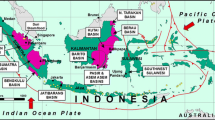Abstract
Coal is the main energy resource in China. Predicting the dynamic trend of coal demand accurately plays an important role in energy consumption. Four scenarios that include weak industrialization scenario, strong service scenario, weak industrialization scenario, and strong service scenario that are based on the progress of science and technology, have been set to regulate five key factors, consisting of natural population growth rate, GDP growth rate, industrial proportion, tertiary industry proportion, and proportion of investment in science and technology. Based on system dynamics method and Vensim-PLE software, the system dynamics model of coal demand forecasting is built to simulate the total coal demand during 2011–2016 and forecast the total coal demand from 2017 to 2030. The constructed model can better predict the future coal demand through the test. In terms of total amount of coal demand, China’s coal demand has a trend of decreasing, which is lower than the 2016 level setting. The total coal demand of scenario 2 is higher than the rest of the scenarios and the total coal demand of scenario 4 is the smallest. Coal demand slows down under strong service sector, and inversely weak industrialization scenario, which is based on the progress of science and technology, can better control the total coal demand.




Similar content being viewed by others
References
Andrade HH (2014) El modelado y la simulación en la escuela-depreescolar a undécimo grado construyendo explicaciones científicas. Dissertation, Universidad Industrial de Santander
Angarita-Zapata JS, Parra-Valencia JA, Andrade-Sosa HH (2016) Understanding the structural complexity of induced travel demand in decision-making: a system dynamics approach. Organ 49. https://doi.org/10.1515/orga-2016-0013
China’s State Council (2017) Notice of the state council on the development of national population. http://www.gov.cn/zhengce/content/2017-01/25/content_5163309.htm. Accessed 25 May 2017
Elshorbagy A, Jutla A, Kells J (2007) Simulation of the hydrological processes on reconstructed watersheds using system dynamics. Hydrol Sci J 52:538–562. https://doi.org/10.1623/hysj.52.3.538
Sibel E, Els VD (2012) Investigating the effects of uncertainties associated with the unconventional gas development in the Netherlands. Proceedings of the 3rd international engineering systems symposium (CESUN), Delft, 18th June 2012
Gökhan A (2015) The application of trend analysis for coal demands modeling. Energy Sources Part B 10:183–191. https://doi.org/10.1080/15567249.2013.813611
He YG (2017) China coal outlook. China Coal Industry Publishing House, Beijng
Koul S, Falebita OA, Akinbamib JK, Akarakiric JB (2016) System, dynamics, uncertainty and hydrocarbon resources modeling: a systematic review. Renew Sust Energ Rev 59:199–205. https://doi.org/10.1016/j.rser.2015.12.088
Lin WB (2016) Research on the countermeasures for the total amount control of coal consumption—quantity management, quality management and price management. Price Theory & Practice 232(5):30–34
Li BB, Liang QM, Wang JC (2015) A comparative study on prediction methods for China's medium- and long-term coal demands. Energy 93:1671–1683
Lin BQ, Mao DX (2014) Analysis on the dynamic influence of coal consumption terminal department on coal demand. Journal of China University of Geosciences (social sciences edition) 14(6):1–12
Richardson GP (2011) Reflections on the foundations of system dynamics. Syst Dyn Rev 27(3):219–243
Robertson H (2013) Global gas demand rises but coal is still king. Pet Econ 80(6):39–44
Robertson HH (2014) Global coal demand global coal demand growth slows. Pet Econ 80(1):35–38
State Statistical Bureau (2017) China statistical yearbook. China Statistics Press, Beijing
Volkan ŞE, Sertaç A (2007) ARIMA forecasting of primary energy demand by fuel in Turkey. Energy Policy 35:1701–1708. https://doi.org/10.1016/j.enpol.2006.05.009
Wu CY, Zhang ST, Yang ZH (2013) Study on prediction of coal demand by the improved artificial fish-swarm neural network. Adv Mater Res 805-806:1489–1493
Zhang HC, Wang ZH, Li XL (2014) The fluctuation pattern of Chinese coal consumption demand and cause analysis. China Pop Res & Environ 24(1):94–101
Acknowledgements
The authors are grateful for the support provided by the Technical and System Engineering Institute in Liaoning Technical University. And the authors also thank all friends for their valuable critiques, comments, and assistance on this paper.
Funding
This study was funded by the National Natural Science Foundation of China. (grant number 71771111).
Author information
Authors and Affiliations
Corresponding author
Ethics declarations
Studies with Human Participants or Animals
This article does not contain any studies with human participants or animals performed by any of the authors. In this study, we did not collect any samples of human and animals. All the data used in this article are from the National Bureau of Statistics of the People’s Republic of China, which are publicly available as a book.
Conflict of Interest
The authors declare that they have no conflict of interest.
Rights and permissions
About this article
Cite this article
Shao, L., Zhao, S. Research on Coal Demand Problem Based on System Dynamics. Process Integr Optim Sustain 2, 383–390 (2018). https://doi.org/10.1007/s41660-018-0049-y
Received:
Revised:
Accepted:
Published:
Issue Date:
DOI: https://doi.org/10.1007/s41660-018-0049-y




